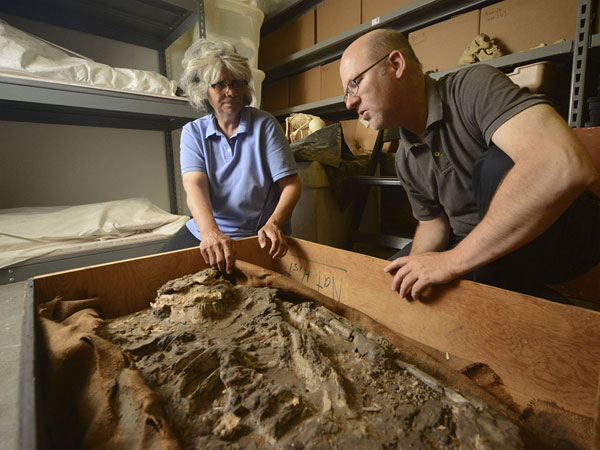Rediscover the 6,500-year-old remains
A fairly complete 6,500 year old skeleton set found 85 years ago has been forgotten in the museum. When it was time to clean up the museum, people discovered it by chance.

Photo: Penn Museum
In 1929 or 1930, Sir Leonard Woodley, an archaeologist, led the team from the Penn Museum and the British Museum excavated Mesopotamia, in the Ur region, southern Iraq. Here they discovered 48 ancient Ubaid era tombs of the ancient Near East.
Woodley and his colleagues found a set of bones that were considered extremely rare because they date to 6,500 years. They wrapped the skeleton with wax and moved to London (England) for inspection, and the final destination for preservation was Philadelphia (USA). Here, the skeleton fell into oblivion, people did not even bother to record, the skeleton remained silent in a small room that the museum staff did not seem to look at.
By 2012, from the effort to digitize records of excavations in Ur, it was learned that the Penn Museum received two skeletons from Woodley, in which a skeleton dating back 2,000 years and the second bone to 6,500 years old.
UPI news agency said Dr. William Hafford, who is in charge of digitizing documents, named the 6,500-year-old skeleton Noah. The reason is that this skeleton is found in areas that are frequently flooded. The name Noah is derived from the story of the cataclysm in the Bible. But the skeleton is much older than the Bible.
- 97 5,000-year-old remains were deformed in a house of 20 square meters
- Mysterious remains of women belong to another human species
- 9,000-year-old remains reveal the collapse of the old city
- Opening the 1,000-year-old coffin, containing the missionary remains from the 11th century
- Secrets of the 7,000-year-old 'shaman' female remains
- Discovered the 5,000-year-old homosexual remains
- Hundreds of years old turned on the original reveal the medieval remains
- Mexico studied 30 sets of ancient remains
- Shocking the 'bird' remains in 5,000 year old tombs
- The 5,000-year-old fist couple remains in Russia
- The remains of a thousand year old skin remain intact after the storm in Ireland
- Mysterious remains of 140 warriors lie between the 'treasure' 3,200 years
 Discovered an ancient centipede fossil 99 million years old
Discovered an ancient centipede fossil 99 million years old Discovered bat-like dinosaurs in China
Discovered bat-like dinosaurs in China Discovered a 200-year-old bronze cannon of the coast
Discovered a 200-year-old bronze cannon of the coast Discover 305 million-year-old spider fossils
Discover 305 million-year-old spider fossils Mysterious about the jewel encrusted skeleton
Mysterious about the jewel encrusted skeleton  Discover treasure and 2,000-year-old aristocratic skeleton in Russia
Discover treasure and 2,000-year-old aristocratic skeleton in Russia  Discover the mysterious Maya queen's skeleton
Discover the mysterious Maya queen's skeleton  The mysterious 'alien skeleton' is decoded
The mysterious 'alien skeleton' is decoded  Mysterious skeleton of the alien planet washed up on the English coast
Mysterious skeleton of the alien planet washed up on the English coast  Mysterious 'monster' skeleton in Russia
Mysterious 'monster' skeleton in Russia 